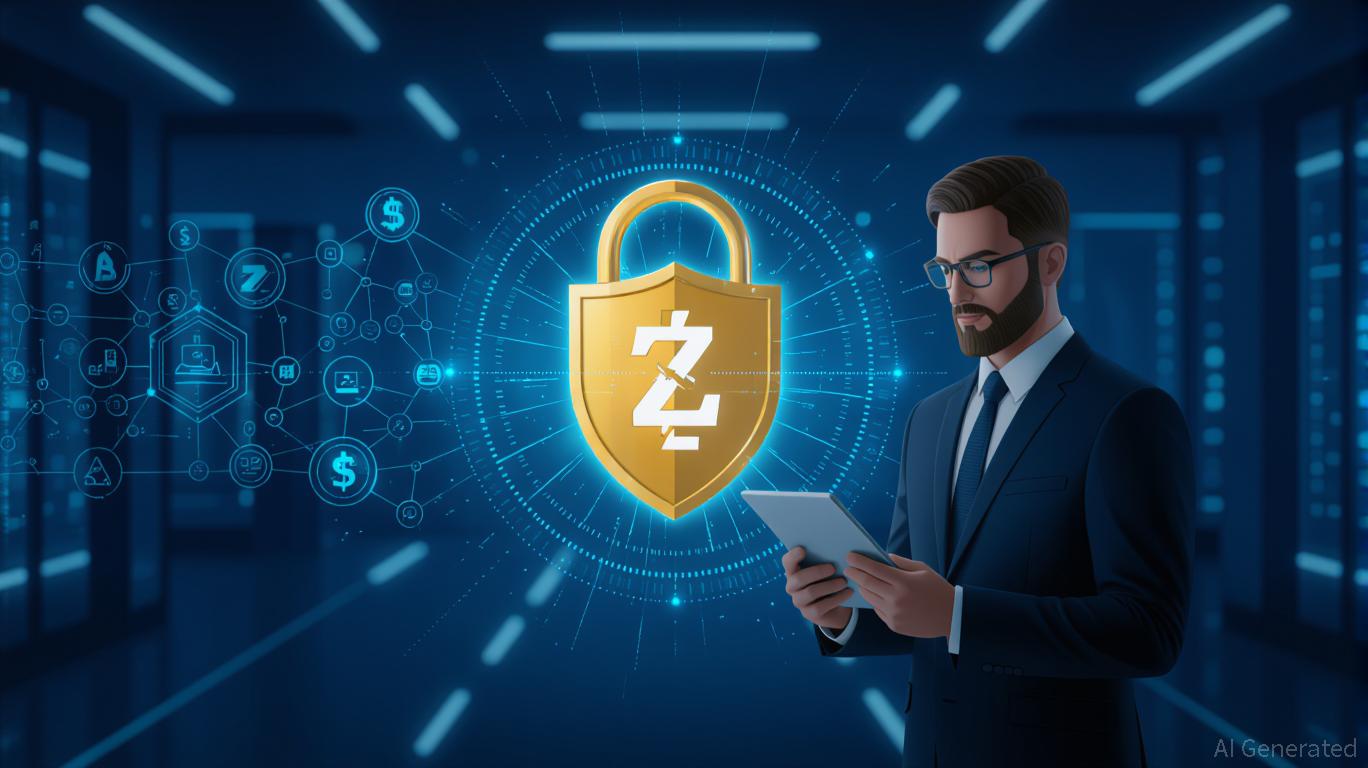Tokenized Treasuries Reach $8.7 Billion as Authorities and Competing RWA Platforms Draw Near
- Tokenized U.S. Treasuries surpassed $8.73B AUM, driven by institutional demand and yield seekers, with BlackRock and Securitize leading the market. - Regulatory scrutiny intensifies as CFTC and Hong Kong tighten oversight, while RWA rivals like tokenized gyms and education assets challenge treasury dominance. - Liquidity constraints and redemption restrictions persist, but ISO 20022 blockchain integration signals progress toward bridging TradFi and digital finance. - Market growth faces hurdles including
The value of tokenized U.S. Treasuries has climbed above $8.73 billion in assets under management, highlighting the growing convergence of traditional finance (TradFi) and blockchain, according to a
The tokenized treasury sector, which involves digitizing U.S. government bond and money market fund ownership, now counts over 57,900 holders—a 6% rise in the past week, per CryptoTimes. Securitize leads the market with a 33.5% share, bolstered by BlackRock’s BUIDL fund, which alone represents nearly $2.83 billion.

Yet, there are obstacles. U.S. securities regulations restrict tokenized treasuries to Qualified Purchasers, excluding most retail investors, and these products often have limited redemption windows, making them function more like conventional funds than round-the-clock crypto assets, according to
The RWA tokenization field is also expanding beyond treasuries. Khabib Nurmagomedov’s gym network, tokenized on the Mavryk blockchain, was featured by
Analysts point out that tokenized treasuries are attractive because they blend the reliability of TradFi with the speed and efficiency of blockchain. With CryptoTimes citing a seven-day average yield of 3.72%, these products present a strong alternative to traditional cash management, especially with current high treasury yields. However, scaling up will require addressing issues like interoperability across blockchains and standardized settlement processes. The recent adoption of ISO 20022 by Swift and
As the sector develops, competition is heating up. While tokenized treasuries currently lead, new RWA projects—from sports teams to education infrastructure—are entering the market. The next few quarters will reveal whether these innovations can match the trust and liquidity established by treasury tokenization. For now, the trend indicates that RWAs are evolving from a niche experiment into a core component of digital finance, as argued in an
Disclaimer: The content of this article solely reflects the author's opinion and does not represent the platform in any capacity. This article is not intended to serve as a reference for making investment decisions.
You may also like
EU postpones AI Act while officials balance ethical concerns with international competition
- EU delays AI Act enforcement amid U.S. pressure and tech industry pushback, proposing grace periods and postponed fines. - Key provisions face one-year compliance delay for generative AI and 2027 penalty postponement to ease corporate burdens. - Trump administration warns of retaliatory measures, prompting EU to align AI rules with transatlantic trade interests. - Critics fear weakened enforcement risks EU's ethical AI leadership, while supporters argue it preserves competitiveness. - Final decision on N

Zcash Halving: How Limited Supply and Market Sentiment Drive Price Increases in Specialized Cryptocurrencies
- Zcash's halving reduces miner rewards every four years, mimicking Bitcoin's deflationary model to lower annual inflation from 12.5% to 1% by 2032. - The 2024 halving triggered a delayed 92% price surge in Q4 2025, driven by regulatory clarity, institutional adoption (e.g., $137M Grayscale Trust), and network upgrades. - Privacy features (27% shielded transactions) and zk-SNARKs attract investors seeking financial privacy, while institutional infrastructure boosts adoption and price stability. - Risks inc

Zcash (ZEC) Price Rally: Unpacking the Privacy Coin's Breakthrough Amid Evolving Regulations and Technological Changes
- Zcash (ZEC) surged 400% by late 2025, surpassing Monero in market cap due to technical upgrades and institutional adoption. - Orchard protocol and Halo Arc enhanced privacy, enabling 27.5% of ZEC supply to use shielded transactions by 2025. - Grayscale's $137M Zcash Trust and Unichain integration expanded institutional access to privacy-focused DeFi applications. - Zcash navigated EU/US regulatory challenges via optional transparency, retaining exchange listings while privacy coins face bans. - $773M ZEC

Dogecoin Latest Updates: DOGE ETF Approval Approaches Amid Price Drop—Will Institutional Investors Halt the Decline?
- Bitwise files 8(a) form for DOGE ETF, triggering 20-day SEC approval countdown as of Nov 7, 2025. - Proposed "BWOW" ETF could institutionalize meme coin exposure but Dogecoin trades near $0.165 below key support. - Analysts warn of $0.10 price target by 2025 due to broken support and trapped sell pressure, contrasting with Ripple's $1B buyback. - SEC's crypto ETF framework and industry competition (Grayscale, Osprey) accelerate adoption despite DOGE's speculative fundamentals. - Market remains divided: E
